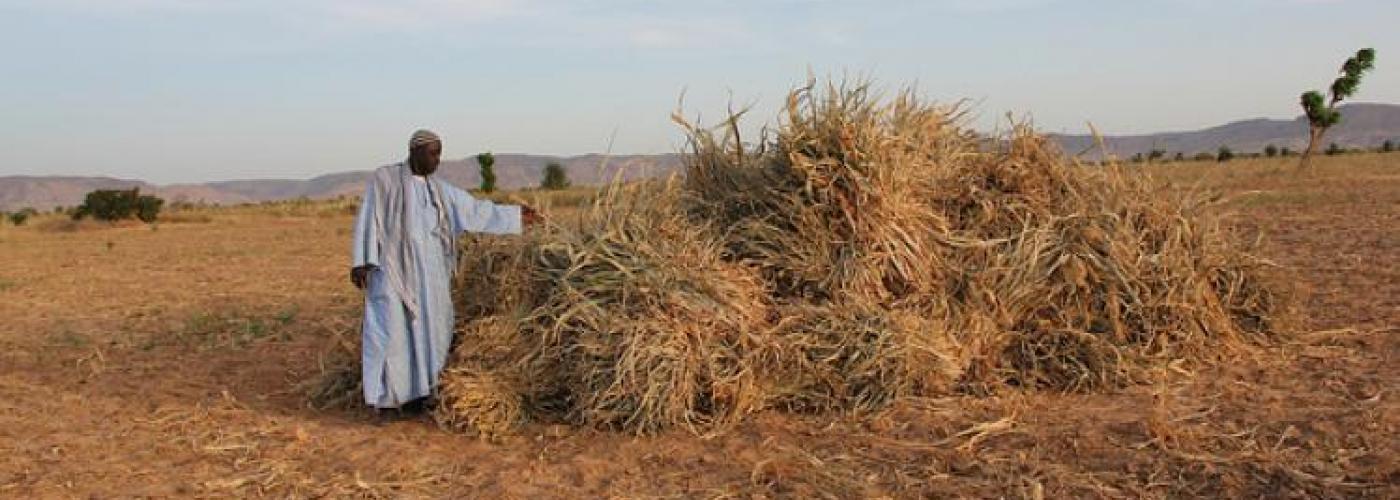Got (Price) Risk?
Image

This post is part of a Microlinks-Agrilinks collaboration for Markets Month, which will explore market systems trends throughout July and August. It is also the first part of a blog miniseries on agricultural risk.
Even in a good year, when the weather cooperates and pests are held at bay, the world’s farmers face another threat: prices. Cash crop producers, such as coffee and cocoa farmers, are exposed to price volatility in international markets and the preferences of consumers in far-off markets. Staple crop producers are additionally exposed to large seasonal price swings, and liquidity constrained farmers with poor access to finance often choose to “sell low, buy high.”
Price volatility affects consumers (and net-purchasers) as well. Recent research indicates that efforts to decrease price volatility are distributionally progressive, meaning that decreasing food price volatility helps poor people even more than it helps those who are better off. Price risk management may be particularly beneficial for women farmers, who not only are responsible for purchasing food for their households, but also — due to restricted mobility and poor bargaining power — must often accept low farmgate prices for their production.
Many of the strategies discussed here for helping producers manage price risk are covered in greater depth in this FAO working paper. Of course these solutions, which are by no means mutually exclusive, should be coupled with improved storage and post-harvest management practices to maintain commodity quality and prevent losses.
Warehouse Receipt Systems
Warehouse receipt systems (or WRS) are basically for-profit warehouses that issue (collateralizable) receipts for commodities stored. Storing their produce allows farmers to avoid “selling low,” while still being able to access credit using the warehouse receipt. Agrilinks shared an example of a WRS in Malawi recently, which highlighted how WRS can increase incomes of smallholders who take advantage of seasonality in market prices. WRS have many benefits, but there are certain preconditions that need to be in place and farmers must also be appropriately trained on their use in order to ensure they live up to their potential.
Contract Farming
Contract farming takes on many forms, but in general it can manage expectations among buyers and sellers, increasing farmers’ access to training, inputs and credit while decreasing price risk for both producers and buyers (as a result of a pre-set price). Contracts may be with individual farmers or with farmers groups. While contract farming has many benefits (particularly for cash crop producers), it relies on a robust enabling environment including strong contract enforcement and trust. The video below discusses how the Nepal Economic, Agriculture and Trade (NEAT) activity supported the creation of a legal framework for contract farming in Nepal.
Market Information Systems
Poor information about market prices (communication infrastructure) in different regions of a country and high transportation costs sometimes permit large price disparities between markets in different regions of the same country. Market Information Systems (MIS) cannot overcome the transportation cost issue, but they can facilitate trade and spatial price stabilization by sharing information broadly about agricultural markets. While traditional MIS broadcast prices over the radio, recently activities such as the mFarmer Initiative have taken advantage of the increasing prevalence of cell phones to push price information to farmers and traders in such varying contexts as Kenya and Tanzania, Mali and India. MIS activities should consider whether gender difference exist in access to price information from different dissemination channels.
Commodity Exchanges and Financial Instruments
Commodity exchanges and financial instruments, such as futures and options, are not well-developed in many developing countries and can be challenging to implement effectively to the benefit of smallholder farmers. Interesting examples of commodities exchanges in Africa include the Ethiopia Commodities Exchange, which has worked with USAID to strengthen coffee trading and marketing, and the Agricultural Commodity Exchange for Africa (ACE), which also has a WRS component. USAID involvement in these exchanges and others provides opportunities to learn and apply lessons to future activities.
Digital Trading Platforms
Growing access to cellphones has increased the viability of digital trading and price risk management solutions. For example, with support from Feed the Future, computer scientists at Makerere University in Uganda have developed a cell phone-based digital crop trading platform called Kudu. Kudu matches buyers to sellers, cutting out the middlemen and helping farmers get better prices for their production. The digital trading platform is one component the larger Feed the Future Innovation Lab for Assets and Market Access (AMA IL) sponsored Building Market Linkages for Smallholder Farmers in Uganda activity, which also includes access to finance and market information systems.
Trade Policies and Grain Reserves
At the national level, governments sometimes attempt to stabilize prices through restrictive trade policies and grain stock management. While these instruments may have a role individually, or in combination in certain situations, government intervention in price stabilization may disincentivize the private sector from engaging in this space.
How Can You Engage?
Please share success stories and lessons learned on price risk management in developing countries. If you are interested in learning more, you might look up the FAO working paper or check out the World Bank’s three self-paced courses on price risk management for specific cash crops (coffee, cocoa and cotton). Many of these strategies also require a strong enabling environment, including legal frameworks for contract enforcement, warehouse licensing, and tracking and guaranteeing receipts. You can learn more about Feed the Future work to improve the enabling environment for food security here. Finally, USAID staff and implementing partners can feel free to contact Jennifer Cissé (jcisse@usaid.gov) in BFS/MPI for more information on the activities above and the integration of risk management strategies into activities broadly.

